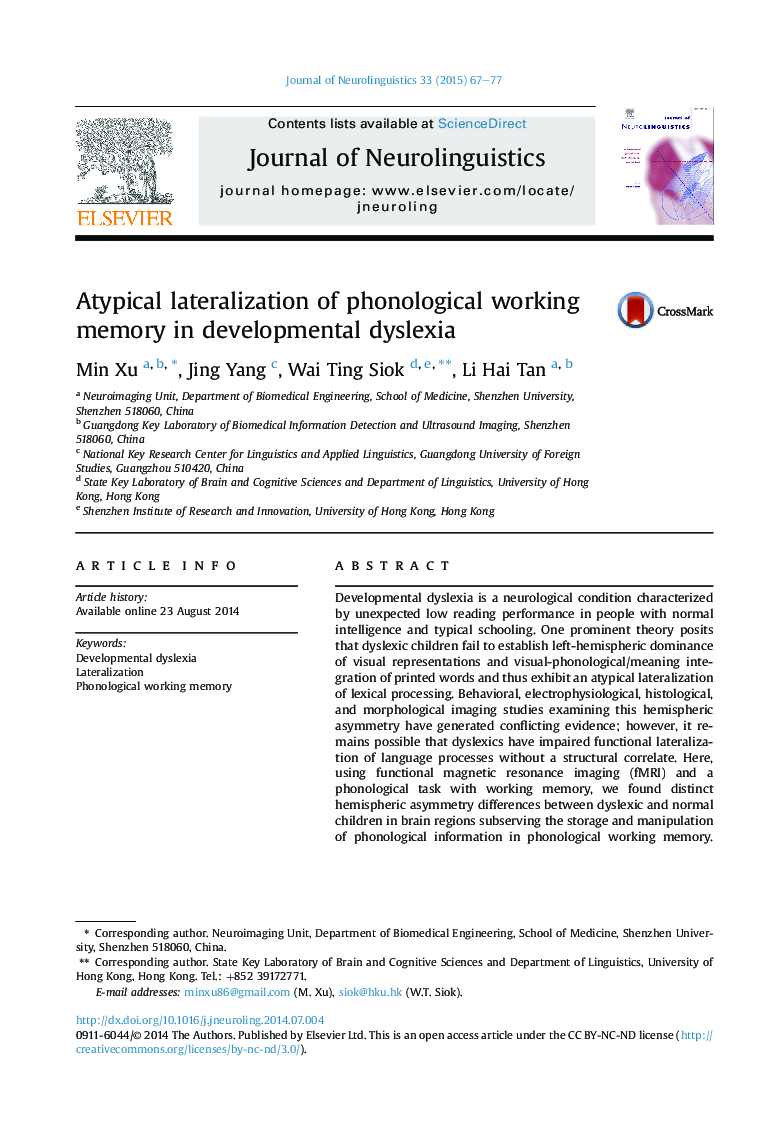| Article ID | Journal | Published Year | Pages | File Type |
|---|---|---|---|---|
| 7268845 | Journal of Neurolinguistics | 2015 | 11 Pages |
Abstract
Developmental dyslexia is a neurological condition characterized by unexpected low reading performance in people with normal intelligence and typical schooling. One prominent theory posits that dyslexic children fail to establish left-hemispheric dominance of visual representations and visual-phonological/meaning integration of printed words and thus exhibit an atypical lateralization of lexical processing. Behavioral, electrophysiological, histological, and morphological imaging studies examining this hemispheric asymmetry have generated conflicting evidence; however, it remains possible that dyslexics have impaired functional lateralization of language processes without a structural correlate. Here, using functional magnetic resonance imaging (fMRI) and a phonological task with working memory, we found distinct hemispheric asymmetry differences between dyslexic and normal children in brain regions subserving the storage and manipulation of phonological information in phonological working memory. Further, the degree of leftward asymmetry correlates positively with reading performance. Thus, the language impairments in dyslexic children appear related to a reduced dominance of the left hemisphere in phonological language functions, which offers clues into the biological dysfunction and possible remediation of developmental dyslexia.
Related Topics
Life Sciences
Neuroscience
Cognitive Neuroscience
Authors
Min Xu, Jing Yang, Wai Ting Siok, Li Hai Tan,
